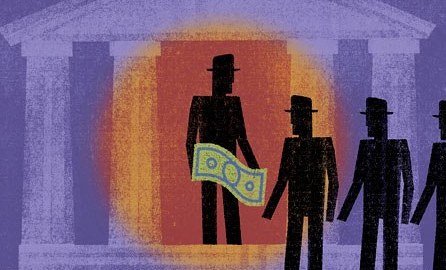Response To The Sosin Plan From Houman Shabab

Senior research fellow at George Mason University’s Mercatus Center, Houman Shabab, has some second thougts on Howard Sosin’s alternative plan to restructure banks in America.
*
Howard Sosin proposes a unique “Backstop Guarantee Takeover” plan to return insolvent banks to financial health after a temporary government takeover. The great merit of Sosin’s proposal is that it positions bank bondholders to absorb losses before taxpayers do. But by not stating the specific end sought by the plan or taking a position on how depository institutions should be structured going forward, Sosin’s proposal could have government playing a large role in troubled banks for years to come and inhibit much needed change in the financial sector.
The main problem with the Backstop Guarantee Takeover proposal is that it seeks a guarantee of all bank assets without placing any real restrictions on bank activities. So long as troubled banks operate, even the new managers Sosin would like to install would still be quite capable of taking excessive risks or making poor decisions. Although a guarantee would not be triggered unless current equity and unsecured creditors—whose interests Sosin’s plan would convert to Special Equity—are wiped out, guaranteeing all of a bank’s assets would undermine managers’ incentives to exercise the kind discipline and risk management required to attain long-term profitability. That banks now need to add almost $75 billion in capital in response to the government’s stress tests indicates that bank managers still need better incentives to solidify their balance sheets.
Sosin’s proposal to guarantee assets related to traditional banking activities also does not make the banks any less insolvent. Based on his own assumptions, losses from bad loans would drain a Backstop Guaranteed bank’s Special Equity once the market value of the bad loans is taken into account. This would leave taxpayers exposed to further losses which may be coming. In the past six months, the International Monetary Fund increased its estimate of total write downs of U.S. loans and securities from the crisis by $500 billion, about two-thirds of which are to be borne by banks. And given that toxic assets are unlikely to ever recover from their current low values, taxpayers would have little hope of seeing any return on their money, even with a Backstop Guarantee.
Instead of guaranteeing all troubled banks’ assets in hopes of preserving the old banking system, regulators should seek an orderly wind down of banks that cannot operate and raise capital on their own. A good bank/bad bank approach or even Chapter 11 bankruptcies are options worth considering. Sosin suggests a Guaranteed bank IPO as a possible exit strategy, but himself acknowledges its shortcomings.
Banks and their assets must be detoxified with new capital. This requires bringing much-needed price discovery through the purchase of toxic assets by hedge funds and other institutional investors, which can be done in a way that is fair and transparent to taxpayers. Using new trading venues like SecondMarket may be helpful. A market detox plan must also operate at the institutional level by making it easier for private equity firms to bail out banks without using taxpayer money. The Federal Reserve should update and relax its rules regarding under what circumstances nonbank investors may invest in banks.




